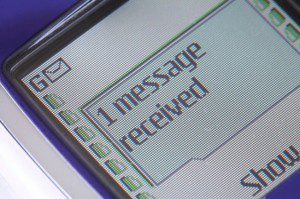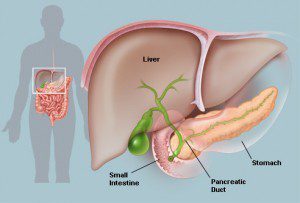 The U.S. Institute of Medicine (IOM) has stated in a recent report that vaccines are overwhelmingly safe and that they do not cause diabetes or autism. The IOM came to the conclusion after reviewing over 1,000 published studies.
The U.S. Institute of Medicine (IOM) has stated in a recent report that vaccines are overwhelmingly safe and that they do not cause diabetes or autism. The IOM came to the conclusion after reviewing over 1,000 published studies.
“We looked very hard and found very little evidence of serious adverse harms from vaccines,” said Ellen Wright Clayton, chairwoman of the reporting committee. “The message I would want parents to have is one of reassurance.” Wright Clayton is also the director of the Center for Biomedical Ethics and Society at Vanderbilt University in Nashville, Tennessee.
The US Health Resources and Services Administration commissioned the report in 2009. It looked at the eight vaccines that make up the majority of the claims filed with the National Vaccine Injury Compensation Program (VICP). The VICP covers 11 vaccines, providing compensation for patients whose health is negatively impacted by vaccines.
The vaccines reviewed by the study include those for influenza, hepatitis B, hepatitis A, meningococcal disease, human papillomavirus, chicken pox, diphtheria, tetanus and pertussis (DTaP), mumps and rubella (MMR), and measles.
The report does state that the research “convincingly supports a causal relationship” for 14 actual adverse health effects. These effects include allergic reactions to six of the vaccines, infections associated with the chicken pox vaccine, and brain inflammation and fever-induced seizures linked to the MMR vaccine. It stated that the severe effects only occur in children who already have weak immune systems.
Four additional adverse effects were linked to vaccines but the evidence for a causal relationship was less convincing. Of the 135 remaining links between vaccines and adverse health effects, the study stated that there was “inadequate evidence to accept or reject a causal relationship.” The VICP may use the new analysis to update the Vaccine Injury Table. The table already includes the majority of the adverse effects contained in the new IOM report.
The IOM states that evidence “favors rejection” of reports that Type 1 diabetes was linked to the MMR and DTaP vaccines. The IOM also sought to reject reports that the MMR vaccine was linked to autism.
“We found five really solid epidemiological reports that were very clear that MMR is not associated with autism, and does not cause autism,” said Wright Clayton.
The IOM has issued previous reports that reached the same conclusion. A 1998 paper was published in The Lancet by U.K.-based surgeon Andrew Wakefield positing that links existed between autism and vaccines. That report has since been retracted by The Lancet, which stated that “several elements” of Wakefield’s paper were “incorrect.” However, the paper continues to have an influence: some parents still refuse to have their children vaccinated, citing risks of autism. The lack of vaccination has led to outbreaks of diseases among children, including whooping cough and measles.
“For those parents who are on the fence, this will be another piece of reassuring evidence, although I don’t know how many more pieces of reassuring evidence you need. For those who are committed to the concept that vaccines are harmful independent of what the data say, it won’t matter,” said Paul Offit, chief of the infectious diseases division of The Children’s Hospital of Philadelphia.
Offit does say that he is “uncomfortable as a scientist” with the methodology utilized by the IOM. When the committee analyzes most of the vaccines, “They’re looking at case reports and trying to decide whether they think the evidence supports a link,” he says. “That’s an unusual way to do science, because now you’re making it more subjective.”
 A high-tech diabetic safety service may soon use text messages to notify paramedics if a patient’s blood sugar levels dip too low. The program is being developed by researchers at Swansea University in Wales and scientists hope it reduce costs for the National Health Service in addition to saving the lives of diabetics.
A high-tech diabetic safety service may soon use text messages to notify paramedics if a patient’s blood sugar levels dip too low. The program is being developed by researchers at Swansea University in Wales and scientists hope it reduce costs for the National Health Service in addition to saving the lives of diabetics. A research team lead by Professor Ulf Ahlgren and his colleagues is at the forefront of the development of optical projection tomography. Based in Umeå University in Sweden, the team has used this emerging technology to describe embryonic development of the pancreas and the distribution of the islets of Langerhans in the adult pancreas. The team’s findings will aid future research that utilizes modeling of human organs in treating diabetes.
A research team lead by Professor Ulf Ahlgren and his colleagues is at the forefront of the development of optical projection tomography. Based in Umeå University in Sweden, the team has used this emerging technology to describe embryonic development of the pancreas and the distribution of the islets of Langerhans in the adult pancreas. The team’s findings will aid future research that utilizes modeling of human organs in treating diabetes. A position statement released by the Endocrine Society supports the use of central institutional review boards to encourage progress in clinical research and streamline regulatory review in multicenter trials.
A position statement released by the Endocrine Society supports the use of central institutional review boards to encourage progress in clinical research and streamline regulatory review in multicenter trials. This September, schools and moms will have a little more incentive to give their children flavored milks: according to the Milk Processor Education Program, that’s when calories and sugar will be reduced in these kid-favorite flavored milks.
This September, schools and moms will have a little more incentive to give their children flavored milks: according to the Milk Processor Education Program, that’s when calories and sugar will be reduced in these kid-favorite flavored milks. Software developer drchrono recently made waves when it released an electronic health care management app for the iPad, which then received ONC-ATCB certification. Now the developer has continued its work in the mobile space, releasing an iOS app designed to replace paper-based patient check-ins at physicians’’ offices.
Software developer drchrono recently made waves when it released an electronic health care management app for the iPad, which then received ONC-ATCB certification. Now the developer has continued its work in the mobile space, releasing an iOS app designed to replace paper-based patient check-ins at physicians’’ offices. A research team at the Joslin Diabetes Center has discovered that an enzyme located in cell mitochondria is less common in the skeletal muscle of diabetes. The discovery could pave the way for the development of
A research team at the Joslin Diabetes Center has discovered that an enzyme located in cell mitochondria is less common in the skeletal muscle of diabetes. The discovery could pave the way for the development of  According San Antonio Heart Study’s latest paper, published in the Annals of Epidemiology, diabetes is more deadly in Mexican Americans than in Anglos. And for diabetics who live in Mexico, their chances are even worse.
According San Antonio Heart Study’s latest paper, published in the Annals of Epidemiology, diabetes is more deadly in Mexican Americans than in Anglos. And for diabetics who live in Mexico, their chances are even worse. Diabetics may need to pay careful attention to their
Diabetics may need to pay careful attention to their  It’s not often that a “wonder drug” appears, claiming to cure a range of diseases and
It’s not often that a “wonder drug” appears, claiming to cure a range of diseases and